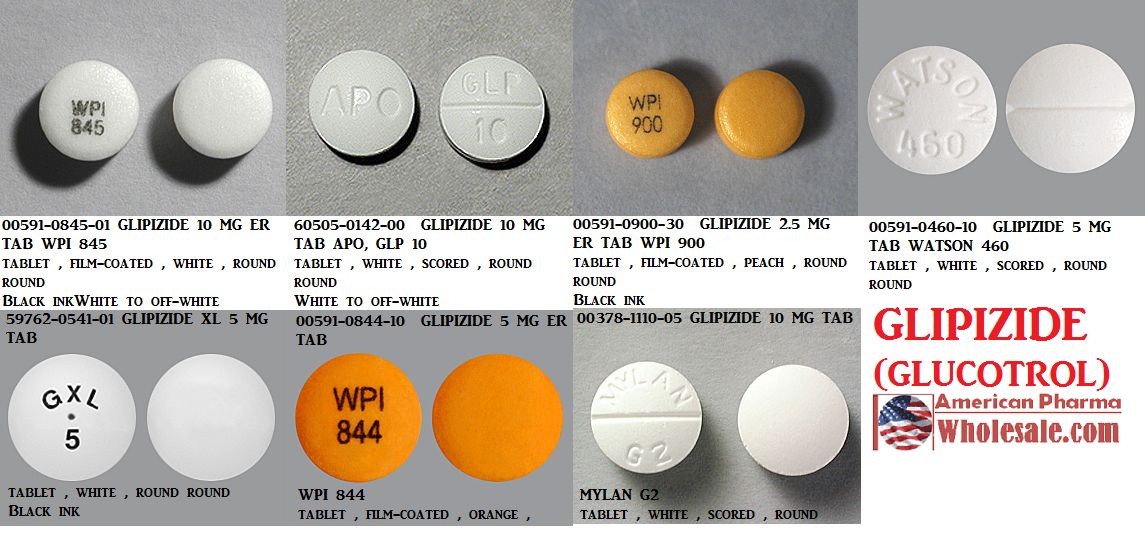
Contents
- 1 Metformin (Glucophage) vs. Glipizide (Glucotrol)
- 1.0.1 What are the side effects of metformin and glipizide?
- 1.0.2 What is the dosage of metformin vs. glipizide?
- 1.0.3 What drugs interact with metformin and glipizide?
- 1.0.4 Subscribe to MedicineNet’s Diabetes Newsletter
- 1.0.5 Are metformin and glipizide safe to use while pregnant or breastfeeding?
- 1.0.6 Summary
Metformin (Glucophage) vs. Glipizide (Glucotrol)
Metformin lowers blood glucose by increasing the body’s sensitivity to insulin. It reduces complications of diabetes such as heart disease, blindness, and kidney disease. It is also used to treat polycystic ovaries and weight gain due to medications used for treating psychoses.
Glipizide is an oral drug that belongs to the sulfonylurea drug class. It stimulates the pancreas to produce more insulin, reducing blood glucose levels in patients with type 2 diabetes.
QUESTION
What are the side effects of metformin and glipizide?
- nausea,
- vomiting,
- gas,
- bloating,
- diarrhea,
- loss of appetite,
- weakness or lack of energy,
- respiratory tract infections,
- low levels of vitamin B-12,
- low blood glucose (hyperglycemia),
- constipation,
- indigestion,
- muscle pain,
- heartburn, and
- chills.
- weakness,
- trouble breathing,
- abnormal heartbeats,
- unusual muscle pain,
- stomach discomfort,
- light-headedness,
- feeling cold.
Patients at risk for lactic acidosis include those with reduced function of the kidneys or liver, congestive heart failure, severe acute illnesses, and dehydration.
Glipizide
Side effects include:
Skin rashes can occur and cause itching, hives, or a diffuse measles-like rash.
Rare but serious side effects include:
- hepatitis,
- jaundice, and
- a low blood sodium concentration (hyponatremia).
Glipizide also may cause hypoglycemia. The risk of hypoglycemia increases when glipizide is combined with other glucose reducing agents.
What is the dosage of metformin vs. glipizide?
- For treating type 2 diabetes in adults, metformin is usually started at a dose of 500 mg twice a day or 850 mg once daily. The dose is gradually increased as tolerated and based on the response of the levels of glucose in the blood.
- If extended tablets are used, the starting dose is 500 mg or 1000 mg daily with the evening meal. The dose can be increased up to a maximum dose of 2000 mg.
- For pediatric patients 10-16 years of age, the starting dose is 500 mg twice a day. The dose can be increased up to a maximum dose of 2000 mg.
- Children older than 17 years of age may receive 500 mg of extended release tablets daily up to a maximum dose of 2000 mg daily.
- Metformin-containing drugs may be safely used in patients with mild to moderate renal impairment.
- Metformin should not be used by patients with an estimated glomerular filtration rate (eGFR) below 30 mL/minute/1.73 m2.
- Metformin should be stopped at the time of or before administering iodinated contrast in patients with an eGFR between 30 and 60 mL/minute/1.73 m2 or in patients who will be administered intra-arterial iodinated contrast.
- The usual starting dose when using immediate release tablets is 5 mg daily administered 30 minutes before a meal.
- The maximum dose is 40 mg daily.
- Doses higher than 15 mg per day should be divided and given in divided doses daily.
- The starting dose when using extended-release tablets is 5 mg daily up to a maximum dose of 20 mg daily.
- Patients using immediate-release tablets may be converted to the nearest equivalent extended-release dose.
What drugs interact with metformin and glipizide?
- Cimetidine (Tagamet) can increase the amount of metformin in the blood.
- Ioversol (Optiray) and other iodinated contrast media may reduce kidney function.
- Thiazide diuretics, steroids, estrogens, and oral contraceptives may reduce the effect of metformin.
- Alcohol consumption increases the risk of lactic acidosis.
- Glipizide
- Alcohol may prolong the action of glipizide.
- Cholestyramine (Questran, Questran Light) may reduce the absorption and effects of glipizide.
- Fluconazole (Diflucan) can increase the absorption and effects of glipizide.
- Many drugs can potentially increase or decrease glucose levels thus increasing or decreasing the effects of glipizide.
Subscribe to MedicineNet’s Diabetes Newsletter
By clicking "Submit," I agree to the MedicineNet Terms and Conditions and Privacy Policy. I also agree to receive emails from MedicineNet and I understand that I may opt out of MedicineNet subscriptions at any time.
Are metformin and glipizide safe to use while pregnant or breastfeeding?
- There are no adequate studies in pregnant women.
- Metformin is excreted into breast milk and can therefore be transferred to the nursing infant.
Glipizide
- Studies indicate that glipizide crosses the placenta.
- Glipizide is not found in breast milk, but the risk of developing hypoglycemia in the nursing infant should be weighed against the potential benefit to the mother of taking glipizide.
Summary
Metformin and glipizide are oral medications that lower blood glucose and are used for treating type 2 diabetes. Metformin is also used to treat polycystic ovaries and weight gain due to medications used for treating psychoses.
Metformin and glipizide are oral medications that lower blood glucose and are used for treating type 2 diabetes. Metformin is also used to treat polycystic ovaries and weight gain due to medications used for treating psychoses.


